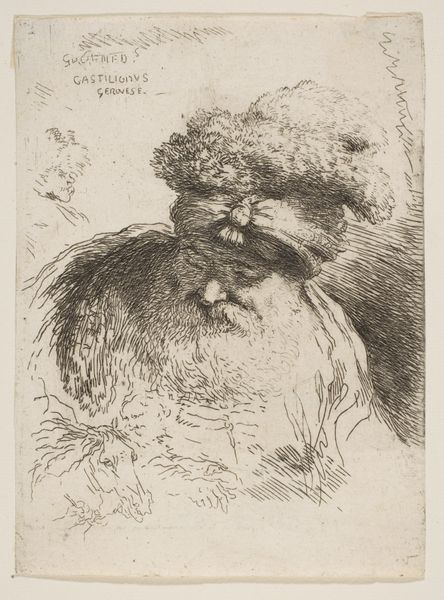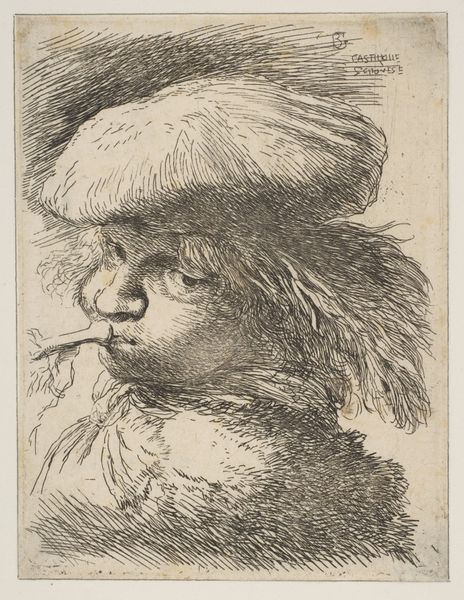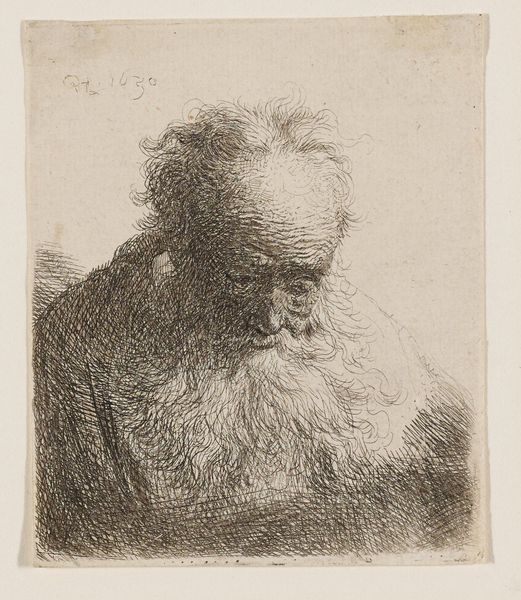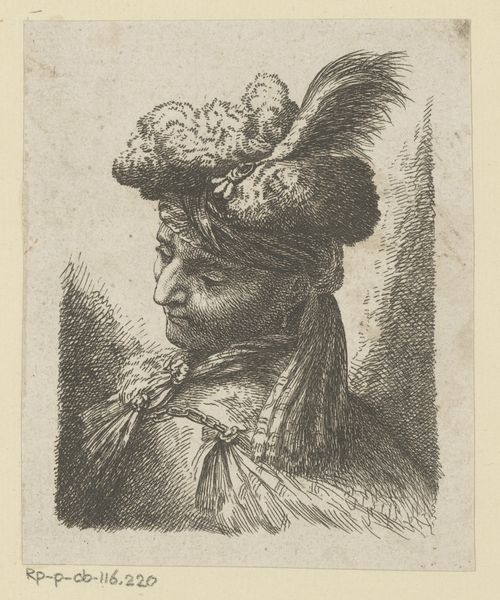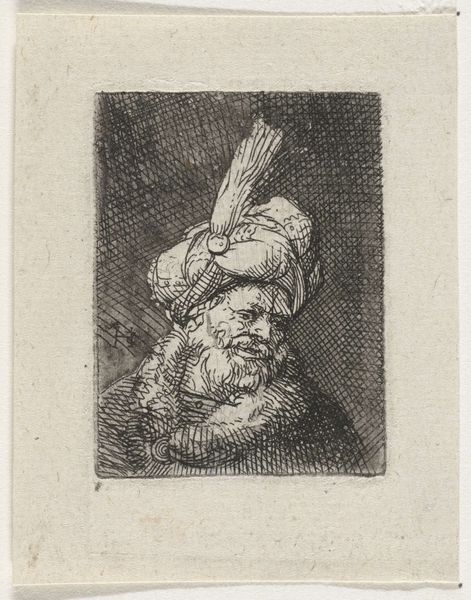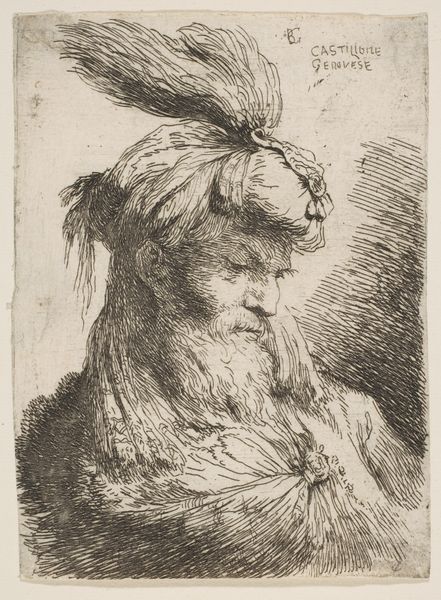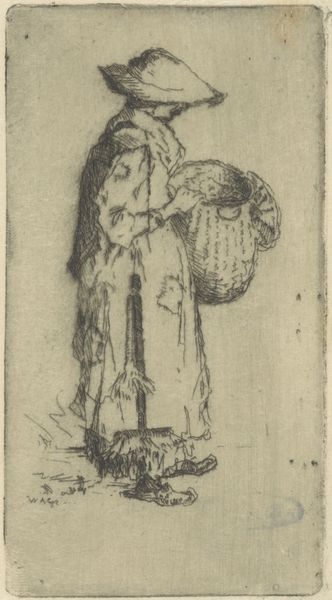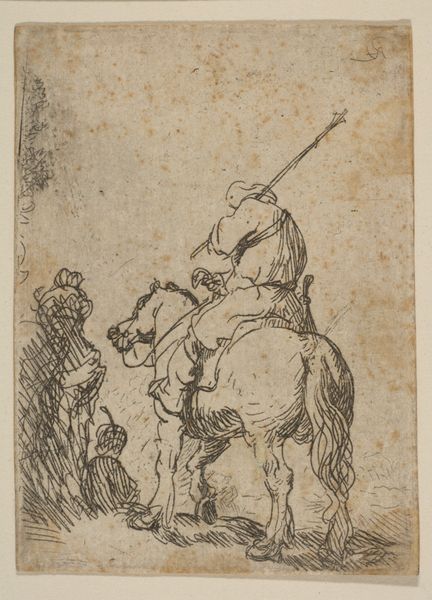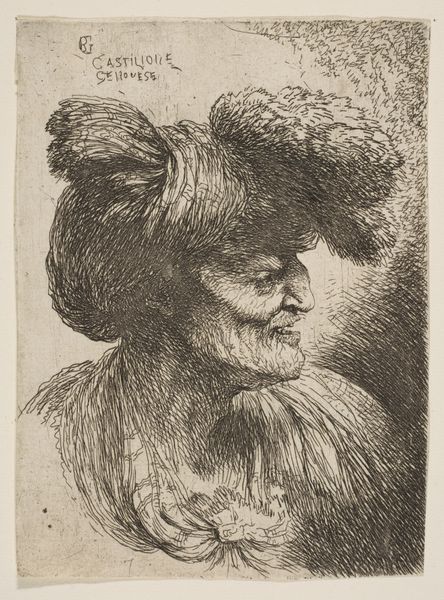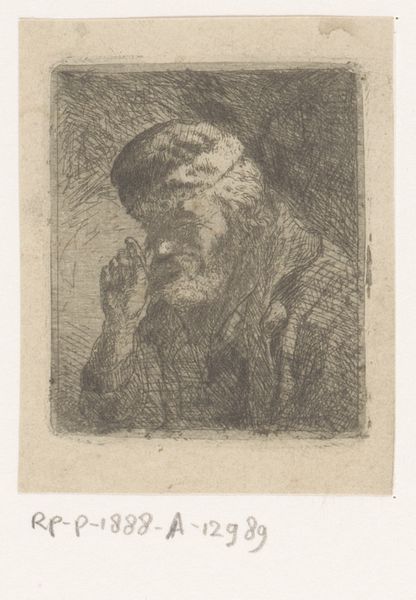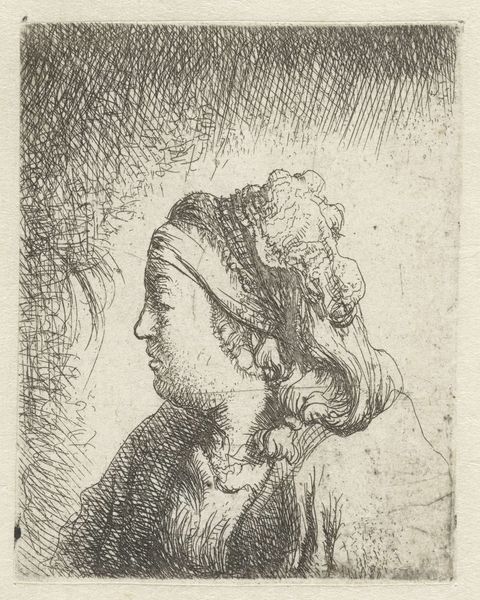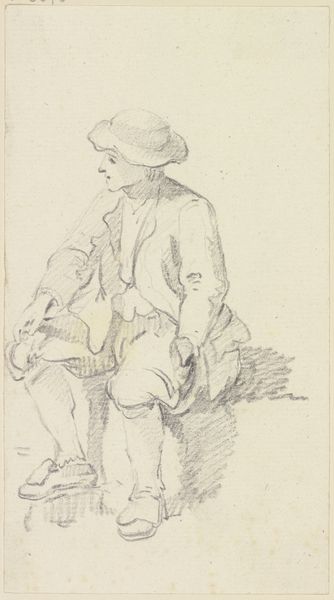
Kop van een oude man met tulband en rechtsonder een kleine kop, hand en paardenhoofd 1750 - 1778
0:00
0:00
georgleopoldhertel
Rijksmuseum
Dimensions: height 116 mm, width 96 mm
Copyright: Rijks Museum: Open Domain
Curator: What a melancholic tableau. The clustered figures seem burdened, the etched lines only amplifying the gravity of the subjects. Editor: And look how Hertel made this print, a piece called "Head of an Old Man with Turban, with a Small Head, Hand and Horse's Head Below Right", likely created between 1750 and 1778. I am fascinated by how many states exist of it! How the physical alterations to the plate chart a process. Curator: Process indeed—but the dynamism achieved through such precise engravings cannot be understated. The visual interplay of lines forms and deforms shapes with incredible artistry. The man’s turban becomes almost sculptural in its weight. Editor: It begs the question of labor too; not just Hertel’s own skilled hand shaping copper, but the economies of printmaking itself, distributing these images far and wide for study, for delight… What contexts informed his choice of an older man? The availability and cost of the materials? The reach he imagined for the images themselves? Curator: Those contexts are, of course, influential, yet consider how the baroque inclination toward detail is served via line here; each curve informs the whole, gesturing beyond mere material concerns. Note especially the secondary placement of the hand, horse’s head; subsidiary forms enhancing a grander psychological drama. Editor: To consider "drama," how was labor deployed and to what ends, beyond some notion of skill? To what purposes beyond mere mimetic depiction was the artisan’s time bent? Whose stories were amplified through this technique of reproduction, and at what cost materially and socially? Curator: Setting aside socioeconomic factors—the emotional resonance relies not only on depiction but the intrinsic language within it. This language forms around semiotic codes—what does the turban signify? Is this figure heroic or subjugated? We return to formal values like shape and texture. Editor: But whose stories do these shapes perpetuate? I want to return our focus to this object not just as art, but evidence of work made within historical conditions that frame all acts, including Hertel's! Curator: It's a vital thing to think about as you approach any artwork. Editor: Agreed. The older the object, the deeper you should look into those contexts.
Comments
No comments
Be the first to comment and join the conversation on the ultimate creative platform.
